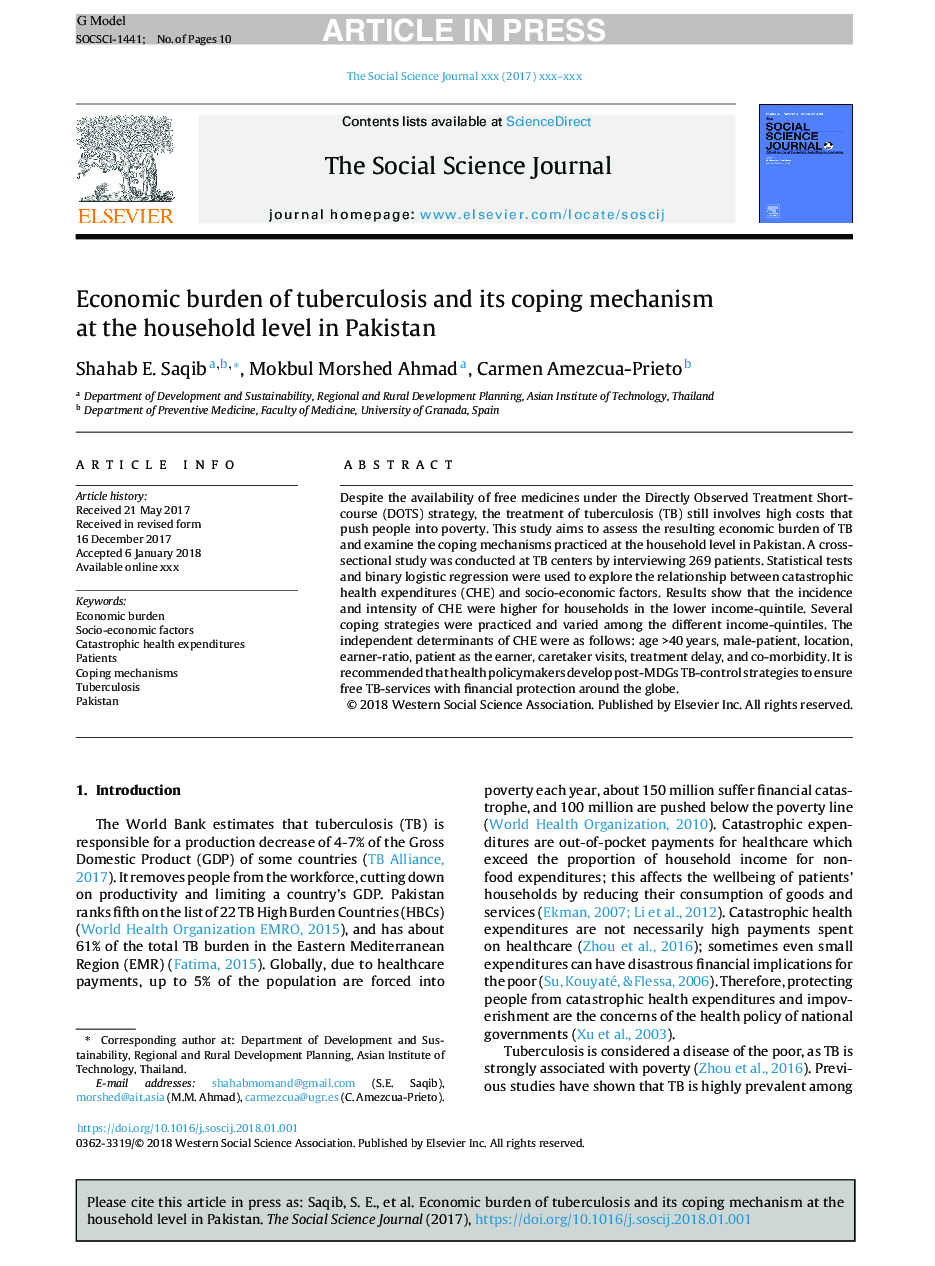| Article ID | Journal | Published Year | Pages | File Type |
|---|---|---|---|---|
| 8941437 | The Social Science Journal | 2018 | 10 Pages |
Abstract
Despite the availability of free medicines under the Directly Observed Treatment Short-course (DOTS) strategy, the treatment of tuberculosis (TB) still involves high costs that push people into poverty. This study aims to assess the resulting economic burden of TB and examine the coping mechanisms practiced at the household level in Pakistan. A cross-sectional study was conducted at TB centers by interviewing 269 patients. Statistical tests and binary logistic regression were used to explore the relationship between catastrophic health expenditures (CHE) and socio-economic factors. Results show that the incidence and intensity of CHE were higher for households in the lower income-quintile. Several coping strategies were practiced and varied among the different income-quintiles. The independent determinants of CHE were as follows: age >40Â years, male-patient, location, earner-ratio, patient as the earner, caretaker visits, treatment delay, and co-morbidity. It is recommended that health policymakers develop post-MDGs TB-control strategies to ensure free TB-services with financial protection around the globe.
Related Topics
Social Sciences and Humanities
Psychology
Social Psychology
Authors
Shahab E. Saqib, Mokbul Morshed Ahmad, Carmen Amezcua-Prieto,
